The document discusses the foundations and scientific aspects of computer science and engineering (CSE), highlighting its interdisciplinary nature and the application of the scientific method in research. It distinguishes computer science from traditional natural sciences by focusing on human-made constructs and emphasizes the importance of both creativity and empirical analysis in the discipline. Various applied and basic areas within CSE, such as machine learning, cybersecurity, and natural language processing, illustrate the breadth of the field and its ongoing evolution.
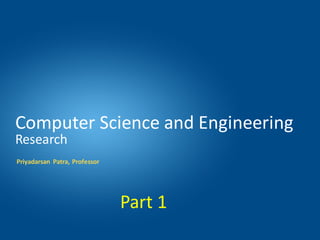
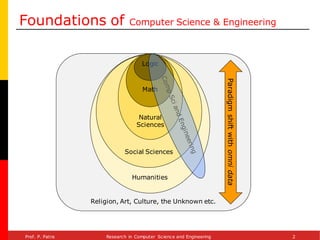
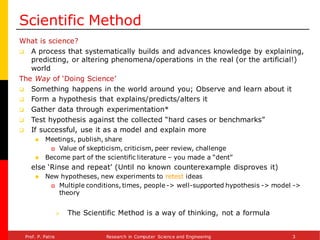
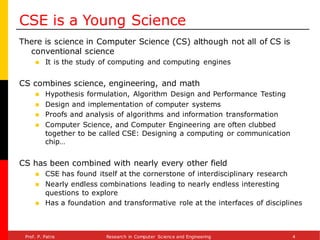

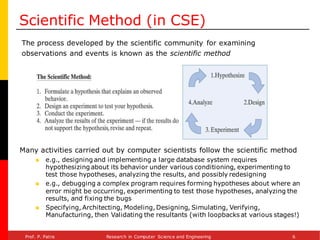
![Computer Science in science
Examples
• Bioinformatics
• Experimental particle physics
• Quantum computing
• DNA computing
• Political and social science
• Protein folding
• Public health informatics
…
Scholars in information technology, software engineering, and
computer science study the technical and computational attributes of
digital technology
Scholars in behavioral, cognitive, and psychological sciences study
individuals’ exposure, use, appropriation, and general behaviors [within
digital technology domains].
Scholars in organizational science, management, and business study
how corporate environments shape, and are shaped by digital technology.
Economists study the large-scale effects of digital technology diffusion and
innovation on organizations, markets, and societies.
Prof. P. Patra Research in Computer Science and Engineering 7](https://image.slidesharecdn.com/researchincsepart1-240204121238-4fadfdb3/85/Research-in-Computer-Science-and-Engineering-7-320.jpg)



